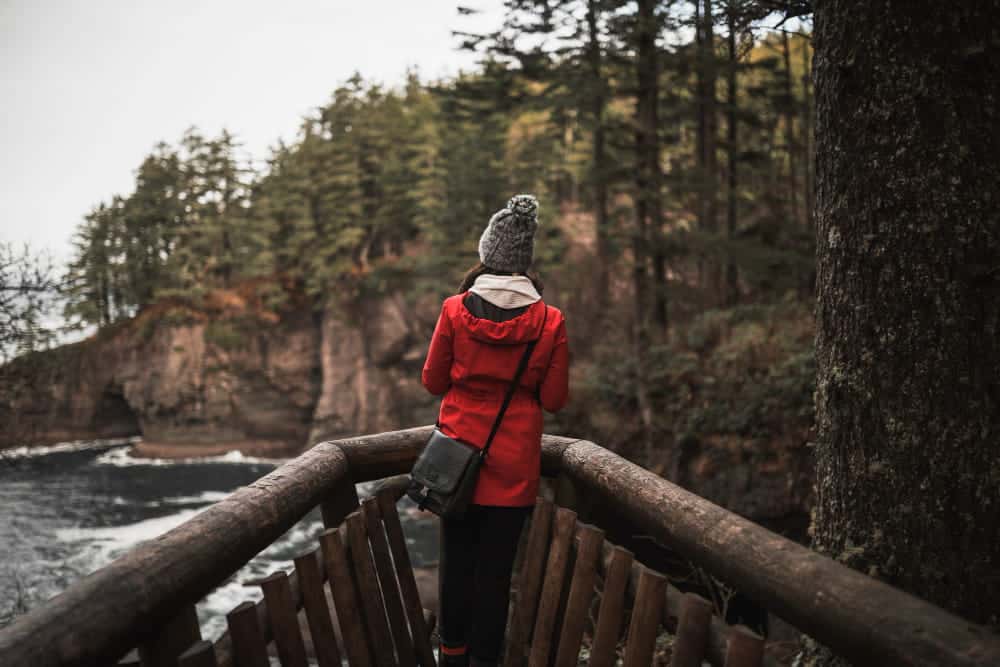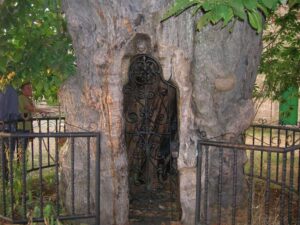
In an age where stimuli never cease and constant connection seems obligatory, many pilgrims are opting for a different experience: walking the Camino de Santiago in silence, without technology or music. This is not a passing trend but a sincere search for introspection, a reconnection with oneself and the natural surroundings.
Walking without headphones, notifications, or social media may seem challenging, but it also becomes a transformative opportunity. The Camino, in its purest essence, invites this: to listen to your body, observe the landscape, and allow space for calm reflection. For many, silence becomes as powerful a guide as the shell or the yellow arrow.
Índice de contenidos
- 1 The Camino as a space for disconnection: returning to the origins of pilgrimage
- 2 Voluntary silence: when walking becomes a form of meditation
- 3 Hearing what we usually don’t: nature, footsteps, breathing
- 4 Routes for Silence: Which Ones Invite the Most Introspection?
- 5 How to prepare to walk without technology
- 6 Real testimonies from pilgrims who walked in silence
- 7 Disconnect to Connect Better: Keys to an Authentic Experience
- 8 The power of silence in a world saturated with stimuli
- 9 The importance of integrating rest and contemplation
- 10 Silence is not isolation: how new forms of connection emerge
- 11 Ideal stages for disconnecting: recommendations from the pilgrims themselves
- 12 How to Maintain Your Commitment to Silence During the Camino
- 13 Who Can Benefit Most from This Experience?
- 14 When the Camino Ends… How to Maintain Inner Silence?
The Camino as a space for disconnection: returning to the origins of pilgrimage

Indeed, the origin of the Camino de Santiago has a spiritual and contemplative foundation. Whether for religious, cultural, or personal reasons, pilgrims have historically sought to distance themselves from the noise of the world to get closer to what is essential. Today, that “noise” is not only physical but also digital.
Technology, useful and practical as it is, can also be a constant distraction. Checking your phone while walking prevents you from appreciating the forest, the changing sky, or the flight of birds. Music, although pleasant, can isolate you from the present moment, dull the emotions that arise during the journey, or block meaningful encounters.
Walking the Camino without technology is a way to return to the original meaning of pilgrimage: the inner journey that moves at the pace of your steps.
Voluntary silence: when walking becomes a form of meditation
Practising silence during the pilgrimage does not mean never speaking, but rather choosing moments to listen to oneself. Many pilgrims report that after the first few days of disconnection, they experience a deep sense of calm and greater mental clarity.
This has a scientific explanation. Walking in silence activates areas of the brain associated with emotional processing and creative thinking. Furthermore, it has been shown that conscious silence reduces cortisol, the stress hormone.
By foregoing headphones, space opens up for a form of active meditation: the body moves, the mind settles, and attention sharpens. It’s no coincidence that more and more walkers associate this experience with a spiritual retreat in motion.
Hearing what we usually don’t: nature, footsteps, breathing

As soon as the screens go dark and the music stops, the surroundings take centre stage. The details that previously went unnoticed — the murmur of water, the crunch of leaves, the steady breathing — become companions. Nature speaks, and the pilgrim learns to listen.
This kind of deep listening is also therapeutic. It helps regulate mood, connect with gratitude, and promote mental rest. It is common for those who choose this way of walking to talk about moments of unexpected emotion: tears without reason, spontaneous smiles, memories that arise with a particular intensity.
It’s not just a noiseless walk. It’s a sensory, emotional, and transformative experience.
Routes for Silence: Which Ones Invite the Most Introspection?
Not all paths offer the same level of tranquility. Some routes are busier, while others allow for greater solitude and direct contact with nature. Below is a brief guide for those seeking a quieter experience:
- The Northern Way (Camino del Norte): with coastal and mountainous sections, it is a less crowded route than the French Way. The Camino de Santiago from Santander to Gijón, for example, offers spectacular cliffs, peaceful villages, and long stretches where only the sea can be heard. Ideal for those wishing to combine scenery with contemplation.
- The Portuguese Coastal Way (Camino Portugués por la Costa): if you want to start from Portugal, the Camino de Santiago from Porto to A Guarda is a less frequented option, with strong natural and cultural elements. Upon crossing into Galicia, you can find truly solitary stretches.
In fact, the route from A Guarda to Santiago can also be ideal for those seeking that silence which speaks volumes. Forests, beaches, and Galician villages provide perfect moments to walk without distractions.
- Other routes such as the Camino Primitivo or the Camino Sanabrés are also considered very suitable for pilgrims seeking a slow and reflective journey. Although not among the most popular, their natural richness and tranquil atmosphere make them excellent alternatives.
How to prepare to walk without technology

Although the idea of disconnecting may sound ideal, in practice it requires conscious preparation. Here are some tips to achieve it safely and confidently:
- Airplane mode activated: if you need to carry your phone for safety, disable internet access. Use it only for emergencies or occasional photos.
- Offline maps: download maps or digital credentials beforehand. You can also carry a paper guide.
- Carry a notebook and pen: replace phone notes with a travel journal. Writing by hand also has introspective value.
- Traditional watch: avoiding using your phone as a watch prevents the temptation to check notifications.
- Advance notice to family: inform your loved ones that you will be disconnected for certain hours or days. This reduces mutual anxiety.
- Minimise devices: leave your e-reader, headphones, smartwatch behind. Less is more on the Camino.
And above all, give yourself permission to be bored. Boredom, in this context, can be the threshold of creativity and self-awareness.
Real testimonies from pilgrims who walked in silence
“On the third day without listening to music, I started to hear myself, to remember things I had forgotten. It was like opening a drawer full of emotions”, says Laura, a pilgrim who walked the Portuguese Way without technology.
Jorge, who walked the Camino Primitivo in autumn, highlights: “The silence didn’t make me feel lonely; it made me feel accompanied in a different way. As if every tree or every stone was speaking to me.”
Stories like these multiply across pilgrim blogs and forums. Many agree that silence heightens the senses, clears the mind, and leads to important decisions. Some reached the end with answers; others with new questions, but all with the feeling of having experienced something authentic.
Disconnect to Connect Better: Keys to an Authentic Experience
If you’re thinking of walking the Camino de Santiago, you might feel the urge to fill the silence with music or to document everything on social media. But perhaps it’s worth giving yourself a few days of pause, of full presence in every step, free from external distractions.
You don’t need to do it all the time or at every stage. You can start with a morning without headphones, a day without checking your screen, or a stretch walking alone. You’ll notice how your perception of the surroundings… and of yourself, changes.
Remember that there are also ways to prepare the adventure in advance, so logistics don’t interfere with your desire to disconnect. You can rely on companies that organise the Camino de Santiago to help manage the details while you focus on what really matters: walking, listening, feeling and discovering.
The power of silence in a world saturated with stimuli
We live hyperconnected lives. Notifications, messages and the constant need to produce content leave us little room to stop and observe, think… or simply be. The Camino de Santiago is being rediscovered as one of the few contemporary experiences where silence is possible and valued.
And it’s not forced silence, but chosen. Pilgrims who opt to leave their phone in the backpack, or even at home, do so to empty themselves of the daily noise that accompanies them. Many say that this decision, far from being a sacrifice, becomes the key to a much richer and more revealing experience.
This type of pilgrimage is reminiscent of ancient spiritual retreats, but with one distinguishing element: constant walking. Moving forward each day along ever-changing paths creates a dynamic that allows you to leave behind not only physical places but also worries, habits and emotional tensions.
The importance of integrating rest and contemplation
One of the less discussed benefits of silence is the improvement in quality of rest. By eliminating constant stimuli — especially screen lights and artificial sounds — the body and mind can disconnect more deeply during the night.
Likewise, pauses (at fountains, viewpoints, rural churches) take on a new meaning when contemplated without distractions. Stopping to watch a stork’s flight, wheat fields, or a sunset over the Cantabrian Sea is not just an aesthetic experience: it’s a way to reconnect with the present and regain the capacity for wonder.
When walking without external distractions, landscapes are not just seen… they are experienced. And this shift in perception can have a lasting impact even after the journey ends.
Silence is not isolation: how new forms of connection emerge
It may seem contradictory, but many pilgrims who have walked the Camino without music or social media report having more genuine encounters with fellow walkers. By not being glued to their phones, they become more open to conversation, exchanging glances, or sharing moments of silence.
There also develop forms of non-verbal communication, small acts of kindness that create a strong sense of community: sharing water, giving way, offering a bandage, or simply accompanying someone during a difficult stretch without needing to speak.
Silence is not synonymous with loneliness, but rather a deeper and more sincere connection with what surrounds us, whether that be people, landscapes, or emotions.
Ideal stages for disconnecting: recommendations from the pilgrims themselves
In addition to the routes mentioned above, many walkers recommend specific sections for those seeking an introspective experience. Some of these are:
- Between Llanes and Ribadesella (Camino del Norte): cliffs, secluded beaches, and green trails allow for a calm walk without crowds.
- Between Viana do Castelo and Caminha (Portuguese Coastal Way): seaside areas and small villages, perfect for practising silence even in rural hostels.
- The rural stages between Tui and Redondela: although more frequented, these can be done early in the morning or at dusk to enjoy a more serene atmosphere.
Many seasoned walkers advise starting early in the day, walking in the first hours without talking, without music, without checking your phone. Let the light, the birdsong, and your own body set the pace.
How to Maintain Your Commitment to Silence During the Camino
Once you’ve made the decision, it’s important to establish strategies to uphold it, as the temptation to check your phone or play music can arise during moments of fatigue or boredom. Here are some useful recommendations:
- Set your rules from the start: for example, only use your phone at the end of the day to check accommodation or send a brief message.
- Create daily rituals without technology: have breakfast observing your surroundings, write a reflection at the end of the day, read a physical book.
- Choose peaceful accommodation: many small hostels encourage rest and nighttime silence. Ask other pilgrims about them.
- Inform your companions: if travelling with friends, explain that you want to walk in silence. This avoids misunderstandings and allows everyone to respect each other’s process.
And if at any point you need to listen to music, do so with intention. A single song per day, chosen for its meaning, can have more impact than hours of random playback.
Who Can Benefit Most from This Experience?
Although silence may seem a challenge for those who have never practised it, anyone can benefit from it on their pilgrimage, especially:
- Those going through a personal transition: breakups, bereavements, career changes.
- People under constant stress: healthcare workers, teachers, tech professionals.
- Young people seeking to rediscover their identity without the continuous influence of social media.
- Older adults wishing to remember or relive the original meaning of the Camino.
The key is to give silence space to do its work, without fixed expectations, with openness and flexibility.
When the Camino Ends… How to Maintain Inner Silence?
Many pilgrims fear that upon arriving in Santiago, the spell will break. Returning to the hustle and bustle, notifications, and urban noise… can be a shock. But there are ways to preserve that inner silence cultivated during the route:
- Establish a weekly screen-free day of disconnection.
- Walk in silence around your city, even if just for 20 minutes a day.
- Reread your journal.
- Seek out spaces for contemplation: parks, libraries, museums.
- Maintain contact with other pilgrims who shared this approach.
The experience, in reality, does not end at the cathedral. What matters is what it transforms within you, and how you choose to live from that experience onwards.









